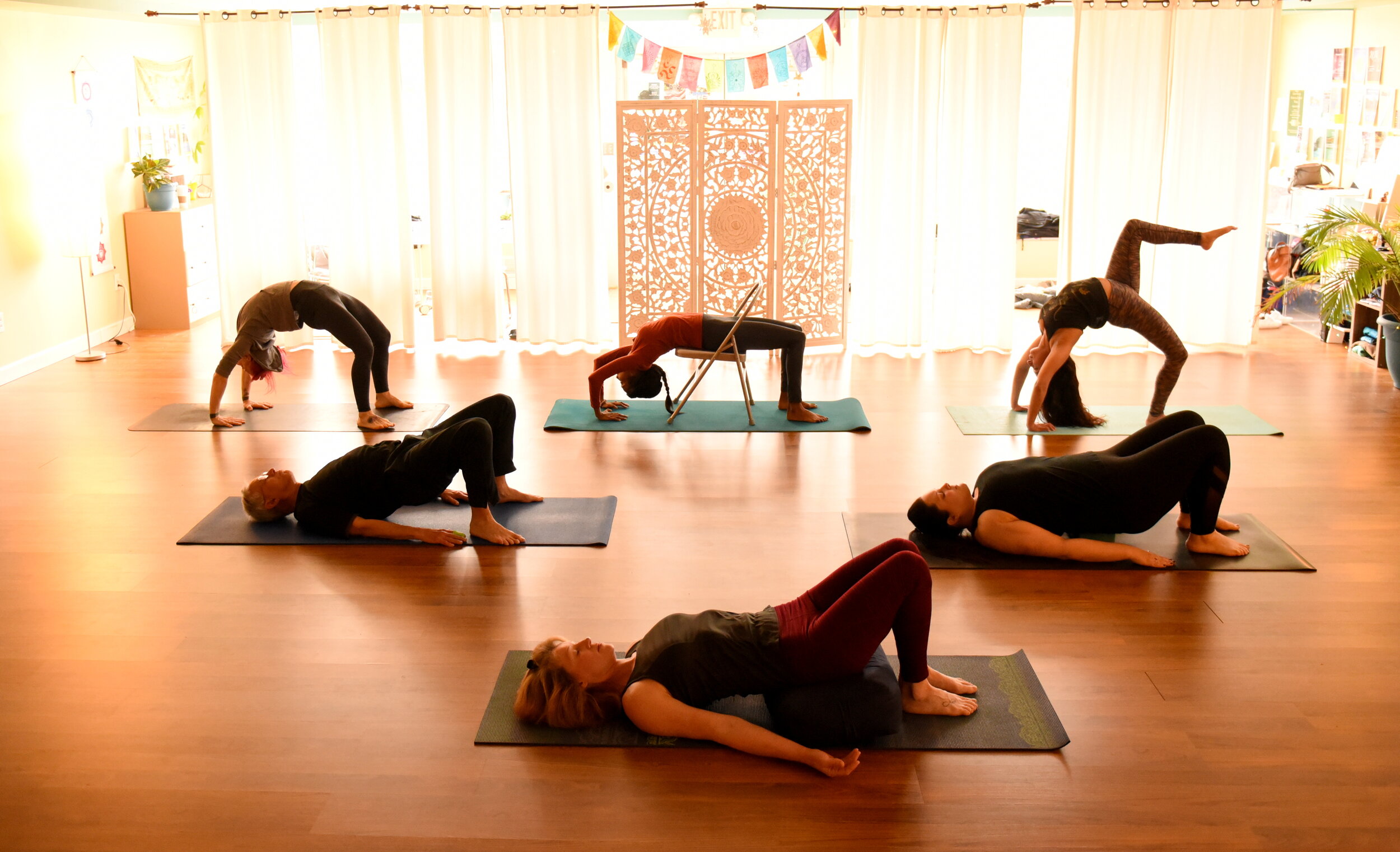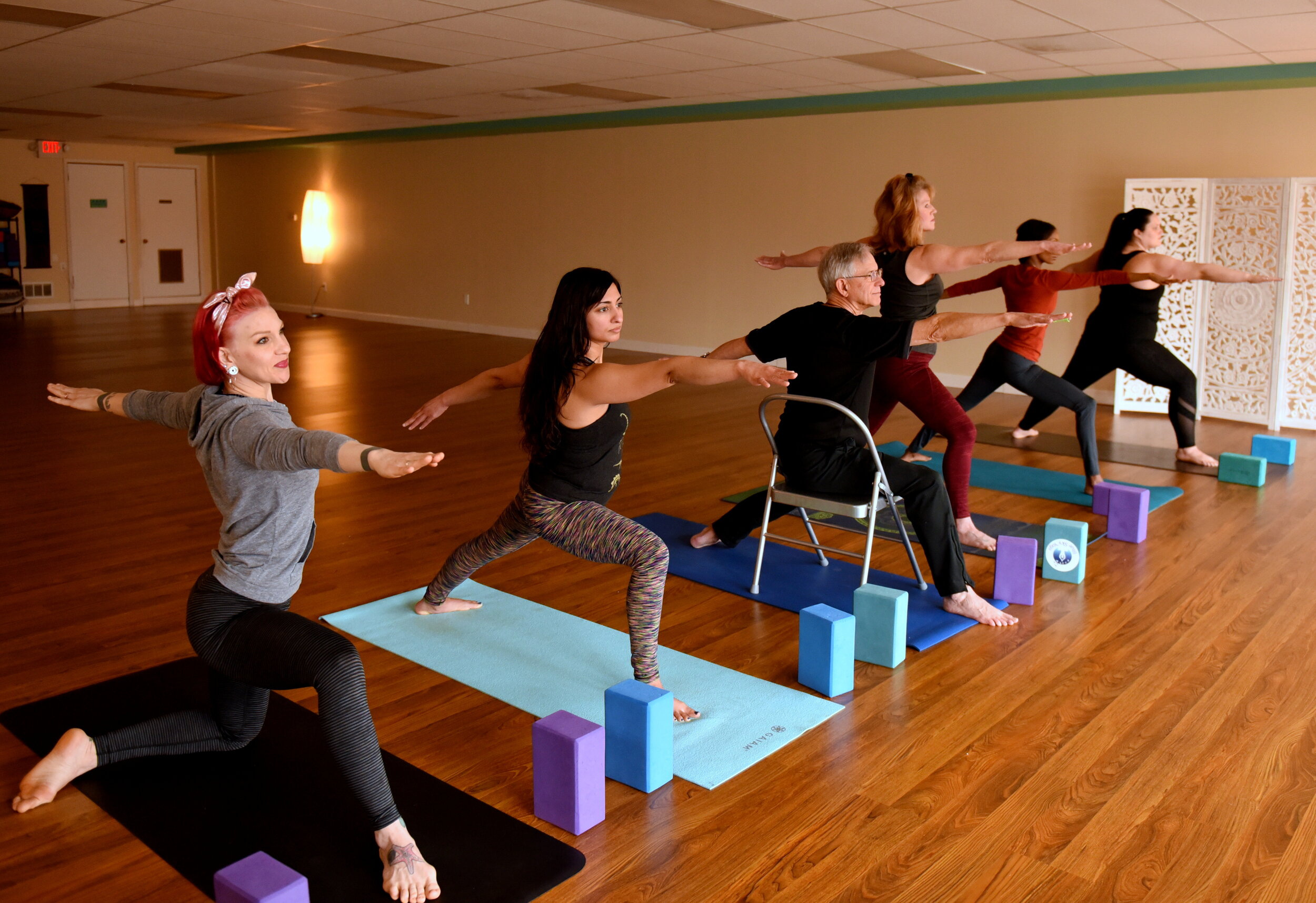Setu Bandha Sarvangasana (setu = bridge; bandha = building or lock; sarva = all; anga = limbs; asana = pose) or Bridge Pose
A bridge is a structure built over some sort of obstacle, be it a river, a railroad track, another road, etc. In essence, a bridge is a connector of two things that may originally seem impossible to connect. Spiritually, a bridge can be seen as a union, as our bodies are a union between earth and sky, and a bridge is a link between two different situations. Right now, as we are in the midst of a global pandemic and many of us are following “shelter-in-place” or “stay-at-home” orders, we are, in a sense, on a bridge between the “normal” that we once knew and a “new normal” that has yet to be seen. We have also figured out a way to bridge the gaps in being separated by bringing yoga online via Zoom, by having FaceTime happy hours, by using masks and gloves and other sanitation supplies to move about in the world. Some of us are using this time to open our hearts to see all of the beauty that we may have missed while moving along in a sort of haze that everyday life had once been. Some have been able to use this time to really consider all of the abundances that filled their lives but had been taken for granted, so in understanding that, some have been able to really let go of what once might have been thought of as a key necessity, but in reality was being held or gripped tightly fearing what might happen if we were to let go. So now, we are being asked to let go.
In yoga, a bridge is one of the quintessential backbends that open our hearts to new and different ways of thinking and of living. We work into deeper backbends by taking it one step at a time, slowly opening our shoulders, deepening our breath, expanding our collarbones, strengthening our legs, lengthening our quads and hamstrings through systematic movement. According to Judith Hanson Lasasater’s 30 Essential Yoga Poses “Bridge Pose symbolizes the connection between the inner and the outer world, the mind and the body, and the individual and the Divine.”
While we may not yet see what is on the other side of the bridge, we are taking this moment one step at a time and trusting that what is waiting for us is something beautiful that will take us further in our journey of expansion through the heart. Practice bridge with all the joy that awaits.
How To
Place feet hip width distance apart with heels directly below knees
Press elbows and shoulder heads down into the floor, lifting chest, and bringing shoulder blades toward one another. Keep your gaze straight up.
Press into your feet and slowly send your knees forward; then lift your hips away from the floor.
Optional: hold outside edges of mat and pull arms apart to bring shoulderblades more underneath the back
2nd Option: interlace fingers under body, stretching knuckles to the front of the mat, continuing to open the chest
Variations
Supported Bridge Pose (shown in image)
Bring block, folded blanket or bolster under the the hips/sacrum - triangular flat bone where hips and low back meet.
Bridge Pose on a chair
holding onto the back of the chair and lifting chest up and out
Wheel Pose (shown in image)
Wheel Pose over a bolster
Bring your spine - tailbone to shoulders - on bolster, feet on ground, arms overhead w/fingers toward shoulders
Wheel Pose on a chair (shown in image)
sending feet through the opening in the back and bringing arms overhead w/fingers toward shoulders
One-legged Wheel Pose
Step one foot toward middle of body
Bring opposite knee toward chest, then lift foot to sky
Benefits
Strengthens the erector spinae muscles (vertical stabilizing muscles of the spine)
Strengthens hamstrings, quadriceps, hip and gluteal muscles
Opens and stretches the abdomen, chest, and shoulders
Increases flexibility in upper back
Stimulates thyroid and pituitary glands
Helps to alter moods
Give a sense of an expanding, open heart
Calms the mind
Energizes the body
Prep Poses:
Ardha Bhekasana/Half Frog Pose (also one-legged Bow Pose)
Anjaneyasana/Low Lunge
Ashta Chandrasana/Crescent Lunge or High Lunge Pose
Bhujangasana/Cobra Pose
Bidalasana/Cat and Cow Pose
Dhanurasana/Bow Pose
Garudasana arms/Eagle Arms
Salabhasana A & C/locust pose arm apart & interlacing fingers
Supta Virasana/Reclining Hero Pose
Urdhva Mukha Svanasana/Upward-facing Dog Pose
Ustrasana/Camel Pose
What this Pose Preps You for:
Urdhva Dhanurasana/Wheel Pose
Bhujangasana/Cobra Pose
Eka Pada Rajakapotasana/ One-Legged King Pigeon Pose
Salamba Sarvangasana/Supported ShoulderStand
Counter Poses:
Simple twists
Apanasana/Knees to Chest Pose
Supta Baddha Konasana/Reclining Bound Angle Pose
Ananda Balasana/Happy Baby Pose
Balasana/Child’s Pose
Seated forward bends
Savasana/Resting Pose
Contraindications & Cautions
Hiatal hernia
Neck injury
High Blood Pressure
Take precaution when pregnant





